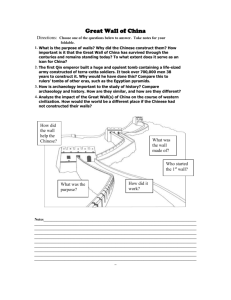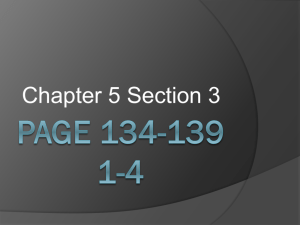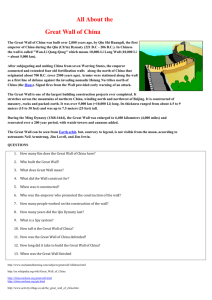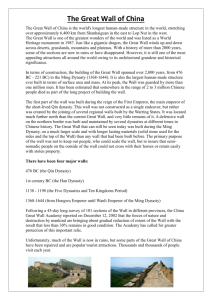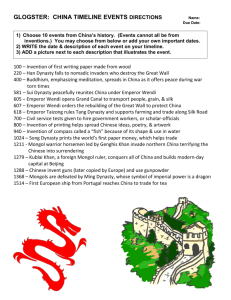Ancient China Vocabulary
advertisement
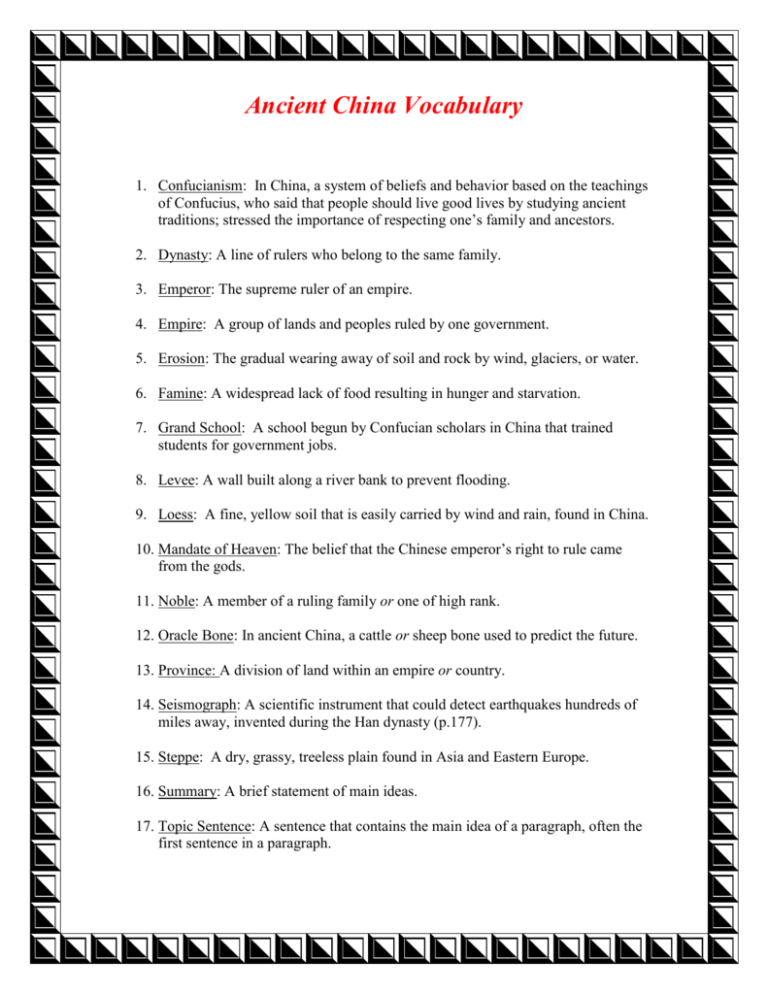
Ancient China Vocabulary 1. Confucianism: In China, a system of beliefs and behavior based on the teachings of Confucius, who said that people should live good lives by studying ancient traditions; stressed the importance of respecting one’s family and ancestors. 2. Dynasty: A line of rulers who belong to the same family. 3. Emperor: The supreme ruler of an empire. 4. Empire: A group of lands and peoples ruled by one government. 5. Erosion: The gradual wearing away of soil and rock by wind, glaciers, or water. 6. Famine: A widespread lack of food resulting in hunger and starvation. 7. Grand School: A school begun by Confucian scholars in China that trained students for government jobs. 8. Levee: A wall built along a river bank to prevent flooding. 9. Loess: A fine, yellow soil that is easily carried by wind and rain, found in China. 10. Mandate of Heaven: The belief that the Chinese emperor’s right to rule came from the gods. 11. Noble: A member of a ruling family or one of high rank. 12. Oracle Bone: In ancient China, a cattle or sheep bone used to predict the future. 13. Province: A division of land within an empire or country. 14. Seismograph: A scientific instrument that could detect earthquakes hundreds of miles away, invented during the Han dynasty (p.177). 15. Steppe: A dry, grassy, treeless plain found in Asia and Eastern Europe. 16. Summary: A brief statement of main ideas. 17. Topic Sentence: A sentence that contains the main idea of a paragraph, often the first sentence in a paragraph. 1 Places 1. Anyang: The ancient Chinese capital of the Shang dynasty. 2. Great Wall of China: A long defensive wall extending 1,500 miles through northern China; built between 1300 and 1600. 3. Huang River: (aka The Yellow River) A river that flows from the Tibetan plateau, across northern China, and into the Yellow Sea. 4. Northern China Plain: A large, lowland region of eastern China that is watered by the Huang River; birthplace of the Chinese civilization. 5. Qin (chin): An ancient province in northern China that rose to power under Emperor Shihuangdi in 221 B.C. 6. Qinling Mountains: A mountain range in north–central China. 7. Xianyang: Capital city of the Qin dynasty during the rule of the Emperor Shihuangdi. 2 People 1. Confucius: (551-479B.C.): Chinese philosopher who stressed the need to respect tradition; his teachings discussed the right and wrong uses of power. 2. Fu Hao: A Chinese king’s wife who led troops to war. Her tomb contained records of her life and times. 3. Han Gaozu: A farmer-turned-general who, in 206 B.C., overthrew the Qin dynasty; he founded the Han dynasty. 4. Shihuangdi: Chinese emperor who founded the Qin Dynasty and unified China with a standardized system of writing and money; his tomb contained the famous “clay army”. 5. Wudi: Han emperor who ruled China from 140 B.C. to 87 B.C.; he set up a system of schools that prepared students for government jobs. 3


